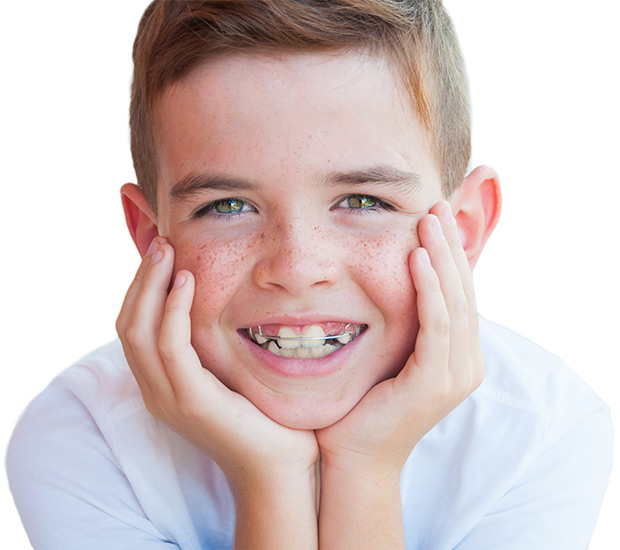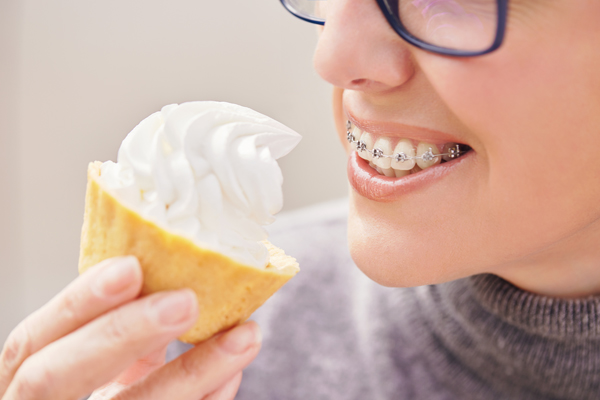Kid’s OrthodontistFrisco, TX
A visit to a kid's orthodontist should be on every child's dental schedule. A kid's orthodontist not only provides treatment but also helps prevent future orthodontic issues. The earlier a child sees an orthodontist, the more treatment options will be available. An orthodontist skilled in working with children can craft a plan to set each child up for a lifetime of beautiful smiles.
Price Family Orthodontics helps children of all ages on their journey to a straight health smile. If you are seeking a kid's orthodontist, our team is happy to help. To learn more about our services or schedule an appointment, call 972-528-5519 today.
Why Kids Should See an Orthodontist
Though braces are often associated with the teenage years, more and more children are beginning orthodontic treatment early. The American Association of Orthodontists (AAO) recommends all children have their first orthodontist appointment by the age of 7 to assess current and future needs. Children may be advised to see an orthodontist or begin treatment earlier in the following cases such as:
- A narrow jaw
- Lack of space for adult teeth to erupt
- Misaligned bite
- Thumbsucking
- Tongue thrusting
- Protruding teeth
These are a few of the common problems a kid’s orthodontist treats. Children who have no noticeable concerns will probably not need orthodontic treatment at an early age. Still, they should have an orthodontic checkup at age 7 to be sure.
Benefits of Kids Seeing an Orthodontist
Early intervention offers more treatment options for children. The orthodontist can ensure there is enough room for erupting adult teeth so the child may avoid more extensive orthodontic treatment later, such as jaw surgery. Seeing an orthodontist skilled in working with young children can also make the process more comfortable and even a little fun.
Having straight teeth offers a person more than confidence in their smiles. Straight teeth are easier to keep clean, reducing the risk of tooth decay and gum disease. Also, properly aligned teeth and jaws can reduce jaw problems such as TMJ pain and support proper speech and chewing. When parents take their children to an orthodontist, they help them lay the foundation for life-long oral health.
How to Find a Kid’s Orthodontist
It is important to find an orthodontist who is knowledgeable and experienced at working with children. Parents should choose an orthodontist their child likes because they will be working with this orthodontist for a year or more. It is completely appropriate to shop around and have a consultation with more than one orthodontist. Parents should write out a list of questions to ask at the consultation and then observe how the orthodontist interacts with their child.
An easy way to narrow down a search is to start with the family dentist who already knows the child's oral health history. They will be able to recommend the proper dental professional the patient needs. Friends’ and family recommendations are another reliable source and one of the most common ways people find healthcare professionals. By utilizing the internet and other technology, parents also have a third reliable method to search for the proper type of dental care their child needs.Parents can look up dozens of reviews on most orthodontists in their area and look at each practitioner's website.
What to expect from treatment
At a child's first orthodontic visit, the practitioner will take impressions of the child's maxillofacial area along with a thorough examination. Our team uses the iTero® Digital Impression System with none of the discomfort associated with a traditional impression. At this appointment, the orthodontist will decide if a child needs early orthodontic treatment, also known as Phase One orthodontics. Phase One does not always involve braces. It can involve using techniques and appliances that encourage the adult teeth to grow properly and guide the jaw into correct alignment. The hope is that these interventions will avoid the need for orthodontic treatment later or lessen the amount of treatment needed.
Often, an orthodontist will not see the need for Phase One orthodontics and recommend braces closer to the teen years. The child's regular dental professional should keep tabs on the situation to help determine when braces are needed. Braces are usually a part of Phase Two orthodontics. There are now more types of braces than ever to fit each child's needs.
Life During and After Orthodontic Treatment
Parents usually have a few concerns when it comes to orthodontic treatment for children. A primary concern is how wearing orthodontic appliances will affect a child's active lifestyle. To address this concern, the orthodontist can discuss the appliance that best fits the child's lifestyle. There are even special mouthguards designed to be used with braces for children who play high contact sports. Parents may also be concerned about how to keep children's teeth healthy during treatment. The orthodontist has advice for this as well, including suggestions on special tools that can help children clean around their orthodontic work more easily. If a child is worried about how they will look with braces, a kid's orthodontist can put them at ease and discuss different types of braces that may be more discreet than traditional metal braces.
The aftermath of orthodontic treatment is a crucial phase in the treatment process. The most important thing children can do after active orthodontics is wear their retainers. Since teeth will shift back to their original position over time, retainers will help to hold the teeth in position. Retainers can be fixed or removable while the patients will wear them for various amounts of time per day.
Schedule a Visit Today
Price Family Orthodontics offers orthodontic services to children of all ages. If your child needs treatment, we look forward to making their experience comfortable and fun. Call our office at 972-528-5519 to learn more or schedule an appointment.
Frequently Asked Questions About Kid’s Orthodontist
What are signs a child needs orthodontic intervention sooner rather than later?
A child's regular dentist will typically tell parents if they see a potential problem. Speech problems can be an early sign of orthodontic issues in children. If your child is having trouble chewing or any jaw pain, it may be necessary to see an orthodontist. If a child has a jaw that is too small for adult teeth to erupt properly, early orthodontics can help create room in the child's mouth.
Is orthodontic treatment painful for kids?
While a common concern of parents, pain is rarely reported with orthodontic treatment, and it is manageable. Also, one of the goals of children seeing an orthodontist is the prevention of more painful procedures later. Most discomfort associated with orthodontics comes when the braces are first put on and when adjusted during checkups. Our team offers advice on dealing with this discomfort, so the process is comfortable for each child.
What is Phase One Orthodontics?
Phase One orthodontics or early interceptive treatment is aimed at younger children who have a mix of baby and adult teeth. It typically takes place between the ages of 7 and 11. Its basic purpose is to address crowding and bite misalignment issues early when the child's mouth is still developing, and there are more treatment options available. Braces and orthodontic appliances may be used at this phase along with devices aimed at correcting abnormalities such as tongue thrusting.
Will insurance pay for orthodontics?
Insurance may not cover orthodontics for purely cosmetic reasons. However, orthodontics is rarely about purely cosmetic issues. For this reason, most insurance covers a portion of care. We can help with the insurance paperwork and discuss payment plan options with patients.
Do all children need Phase One orthodontics?
Not every child will need Phase One orthodontics. Some children may only need Phase One orthodontics, others will need only Phase Two, some will need both, and some will need no orthodontic treatment at all.
How should children care for their teeth during orthodontic treatment?
Children should care for their teeth the same way they cared for them before braces or orthodontic appliances. In addition, they should be sure to brush after eating. Any removable appliances should be removed while eating. Flossing is more difficult, and so your dental professional may recommend a water flosser or interdental brushes for the hard-to-reach places. Our team is happy to offer suggestions on caring for the teeth and orthodontic components.
Check out what others are saying about our orthodontic services on Yelp: Kid's Orthodontist in Frisco




